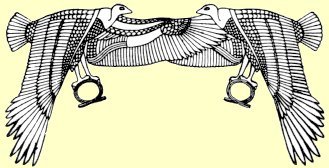A 3000-Year-Old Toe
Today, a big toe made of wood. The University of Houston's College of Engineering presents this series about the machines that make our civilization run, and the people whose ingenuity created them.
The years from a thousand to eight hundred BC were an ebb tide for ancient Egypt. They were the dog days of the so-called New Kingdom. The next several centuries would see successive invasions by Ethiopians, Abyssinians, Persians, and finally the Greeks.
But the old civilization and the old ways were still in place. The old funerary practices were alive and well. Now German scientists look at a mummy from Thebes during this period.
Egyptian medicine had been highly honed for millennia, as we know from so many preserved bodies. (We're pretty sure that Ramses the Great died in old age from a tooth abscess, curable only by modern antibiotics.) We know the Egyptians were good at traumatic medicine. And they probably did several forms of surgery.
Now this mummy: She's a tall woman who died in her fifties. Her tomb had been plundered; her hands and one thigh are missing. But the rest of her body has much to tell. Her teeth are badly worn. That was common, since stone-milling left debris in grain. Bread was generally hard on teeth. She also suffered from arteriosclerosis and from a mineral deficiency in her leg bones.
The real surprise is found on her right foot. The big toe is made of wood! It's affixed to the foot with an ingenious contraption made of wood plates and thongs. It's beautifully carved, with a realistic nail. It's been painted a dark brown.
X-rays of the foot show that that the adjacent bone has healed, and skin has grown over it. Whether the amputation was traumatic or surgical, we cannot tell. However, the form of her arteriosclerosis could suggest that the woman suffered gangrene in the toe -- that it had to be amputated.
The article in the medical journal Lancet points out that other false limbs have been found in tombs. But they appear to've been a matter of replacing missing body parts after death. That was done so the person could enter the afterlife intact.
But the bottom of this wooden toe shows wear. The woman had definitely used it while she still lived. Our big toe carries forty percent of the weight we place on our foot. Without it, we can feel very unstable. The mineral loss in the woman's legs might mean that she was less mobile without her toe. Maybe this wooden replacement was an ingenious, if late, attempt to correct the loss.
The authors wonder if they've found the earliest known prosthesis. Perhaps they have. But I find their article spins an even more interesting yarn. Piece by piece they've recreated this three-thousand-year-old woman. I put a face on her -- think about her verve, perhaps her elegance. I imagine her doctor saying, "I have a new procedure that you might like to try." I hear her answer, "By all means, do; I don't intend to be lame." As she becomes real, I recall a wonderful line by Emerson. He said,
There is properly no History; only Biography.
I'm John Lienhard, at the University of Houston, where we're interested in the way inventive minds work.
(Theme music)
Nerlich, A. G., Zink, A., Sziemies, U., and Hagedorn, H. G., Ancient Egyptian Prosthesis of the Big Toe. The Lancet, Vol. 356, Dec. 23/30, 2000, pp. 2176-2179 and the Talking Points section. I am grateful to Houston doctor Jimmy Schmidt for providing me with the Lancet article.

Egyptian funerary vultures